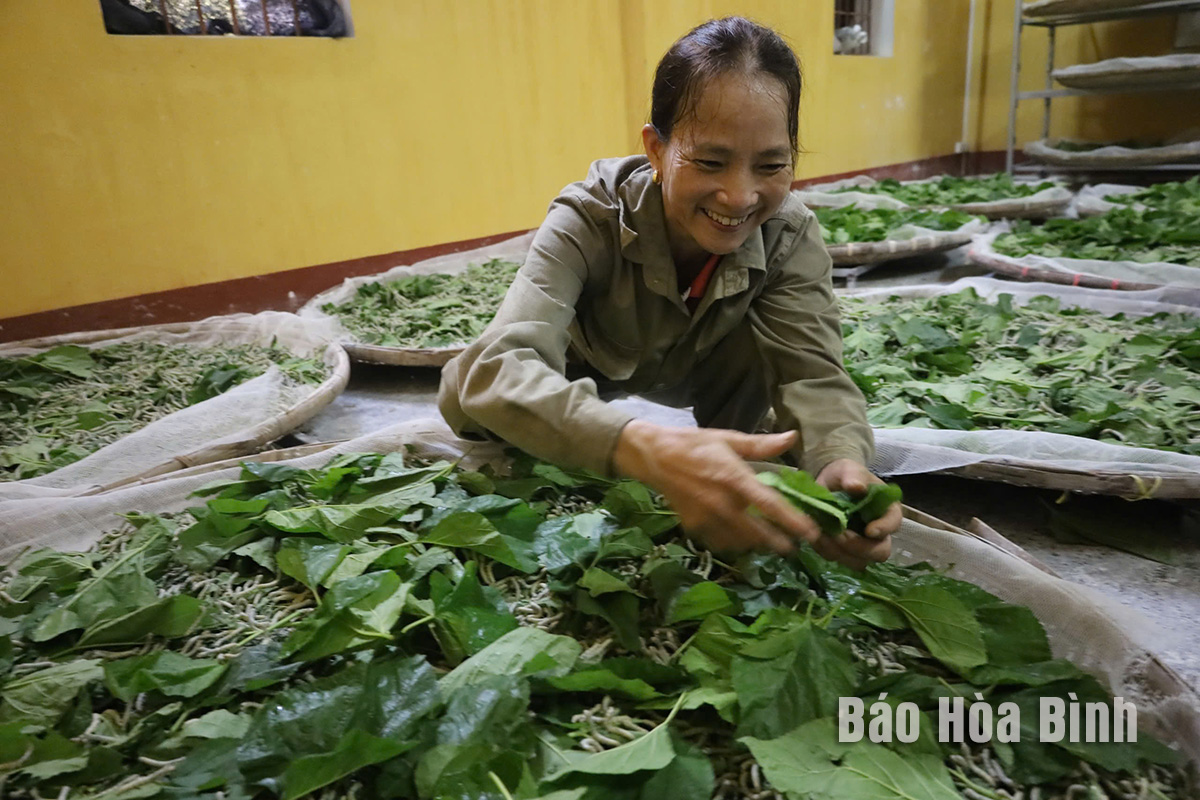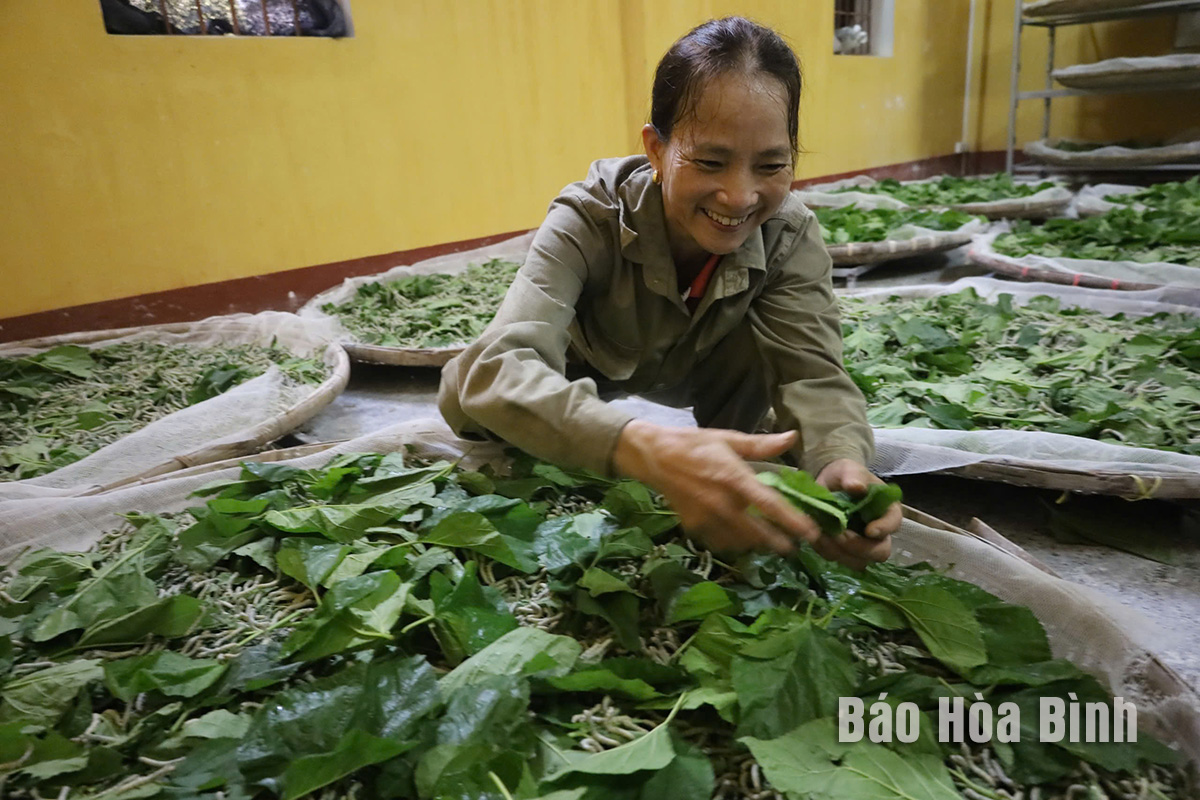



Farmers in Phu Nghia commune gain employment and income through their involvement in the mulberry-growing, silkworm-raising, silk-spinning, and weaving processes managed by the Chi Ne Plantation Technical Cooperative in Phu Nghia commune, Lac Thuy district.
Beyond establishing a new commercial production zone in the area’s naturally favourable environment, this initiative aims to build a brand for Lac Thuy – Hoa Binh silk while developing agro-tourism destinations.
The introduction of mulberry cultivation and silkworm farming to Lac Thuy traces back to descendants of Do Dinh Thien, a patriotic entrepreneur who once owned the Chi Ne Plantation and various silk trading businesses.
Nguyen Toan Thang, Director of the Chi Ne Plantation Technical Cooperative, said the cooperative initiated its mulberry cultivation and silkworm farming project in 2021. Initially piloted on a 4-ha plot loaned by the district’s heritage management board, the project involved seven cooperative members and five additional households from Song Boi hamlet in Phu Nghia commune. Participants received support with seedlings, pesticides, and supplies for silkworm farming, along with contracts ensuring the purchase of mulberry leaves and cocoons.
"Previously, the alluvial land along Song Boi hamlet was mainly used for cassava and maize or left idle. After joining the cooperative’s supply chain and transitioning to mulberry cultivation, we found this crop requires minimal care, faces few pests, and yields significantly higher economic returns than maize or rice. With the cooperative guaranteeing the purchase of all mulberry leaves, our livelihoods have improved substantially, and more households are joining the model,” said Bui Thi Thanh, a resident of Song Boi hamlet.
Experience from production activities in Phu Nghia and Phu Thanh communes has shown that mulberry plants thrive well in the region's soil and climate, with minimal pest issues. Notably, their harvesting cycle can extend up to 20 years. Each hectare of mulberry cultivation is estimated to generate over 200 million VND (7,810 USD) annually. As a result, mulberry farming has expanded beyond its initial focus in two communes to additional areas in Kim Boi district, now covering over 22 ha in total.
To support local farmers in expanding mulberry cultivation, the district’s specialised agencies have collaborated with the cooperative to provide training sessions, guiding farmers in applying advanced scientific techniques for intensive cultivation. The district has also instructed communes and townships to review and allocate suitable land resources for mulberry planting while encouraging the cooperative to sign supply chain contracts with organisations and households to ensure consistent raw materials for silkworm farming.
Nguyen Toan Thang emphasised the growing demand for expanded mulberry plantations, noting that with a stable consumption market, the mulberry farming area could expand to 150-200 ha. To improve productivity and efficiency, the cooperative has introduced a modern sliding-tray system for silkworm rearing. This innovative system is ideal even for small silkworm farms, featuring wheeled trays that facilitate movement, cleaning, and feeding while ensuring hygienic conditions.
Currently, the cooperative has constructed a 1,000-sqm silkworm-rearing house equipped with advanced technology and invested in two silk-spinning workshops. In addition to creating local employment opportunities and contributing to sustainable poverty reduction, this model is integrated into agro-tourism.
According to Hoang Thi Thu Hang, Vice Chairwoman of the Lac Thuy district People's Committee, several organisations and enterprises from within and beyond the province have visited the district to explore this promising model. The district actively encourages the expansion of commercial mulberry farming to produce silk products for tourism markets and export. Efforts are also underway to develop unique agro-tourism experiences, such as mulberry picking, silkworm feeding, and participating in silk-spinning and weaving alongside local artisans.